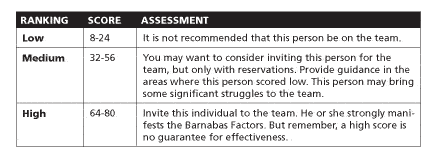Categories: Articles (EMQ), EMQ, Section
Related Articles
How Do I Get My Pastor Engaged in Missions? – Cracking the Code
Description: It’s been said, “When it comes to missions in the church, the pastor either holds the key to the front door or holds the…
From Unhealthy Dependency To Local Sustainability
Presented by: Jean A. Johnson, Executive Director of Five Stones Global Description: It takes a great amount of intentionality to create a culture of dignity,…
Identity, Security, and Community
By Dick Brogden Jeddah, KSA. November 2019 Synopsis: God is light and in Him there is no darkness at all (1 John 1:5). It is…
Mapping Church Missions: A Compass for Ministry Strategy
Description: The terrain of church missions is often bewildering. Should we prioritize evangelism or works of service?
Putting Together a Church-planting Team? Look to Barnabas
A biblical examination of eight aspects from the life of Barnabas for church-planting teams.




